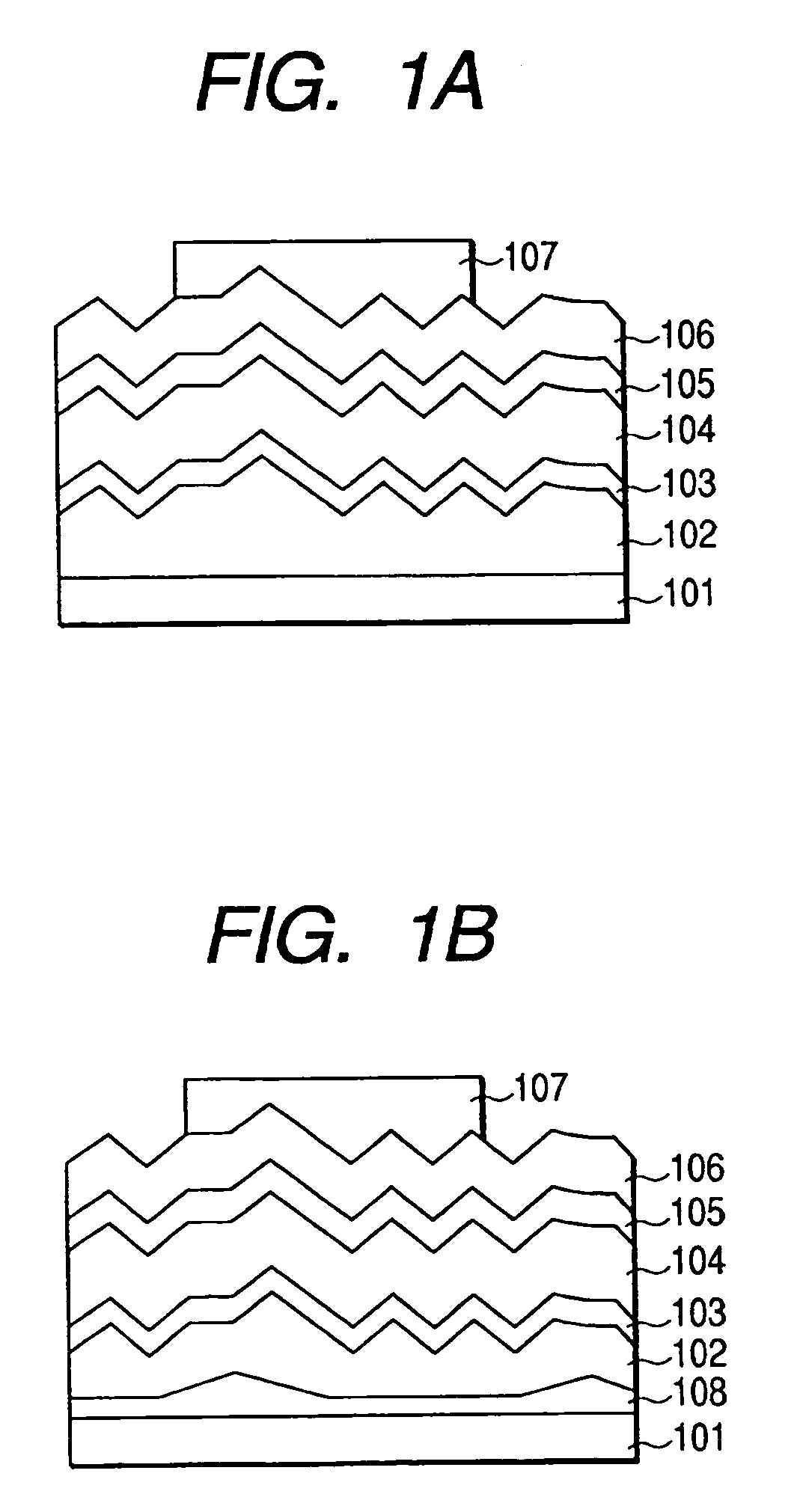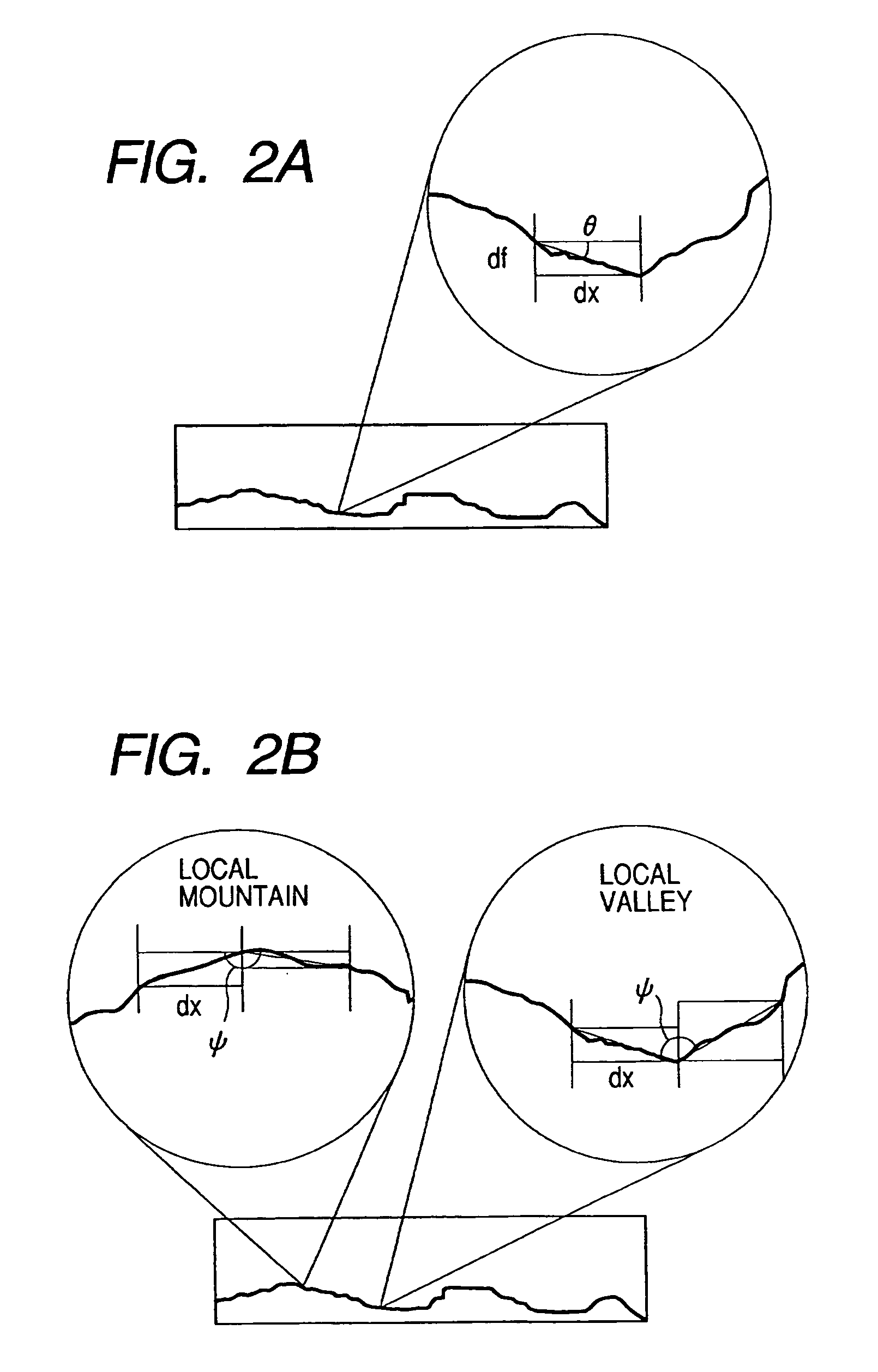Substrate with transparent conductive layer, and photovoltaic element
a technology of transparent conductive layer and photovoltaic element, which is applied in the manufacture of final products, instruments, lighting and heating apparatus, etc., can solve the problems of increasing the production cost of a single-crystalline silicon photovoltaic element, increasing the manufacturing cost, and increasing the cost of photovoltaic element unit electricity generated compared to an existing power generation method, so as to increase the light absorption in the semiconductor layer, high yield, and high reliability and photoelectric
- Summary
- Abstract
- Description
- Claims
- Application Information
AI Technical Summary
Benefits of technology
Problems solved by technology
Method used
Image
Examples
example 1
[0170]Initially, a transparent conductive layer 102 was deposited using the depositing apparatus shown in FIG. 3 to prepare a substrate with the transparent conductive layer.
[0171]First, preparation of a supporting substrate 101 was carried out. A 1.1 mm thick, 50×50 mm2 glass substrate (#7059) manufactured by Corning Company was ultrasonically cleaned with acetone and isopropanol and dried by a warm wind.
[0172]To the depositing apparatus shown in FIG. 3, a source gas supply device (not shown in the drawings) is connected through a gas introducing pipe 317. The source gas cylinders, all of which were of ultrahigh purity, comprises an Ar, Xe O2 and F2 gas cylinders. There are targets of Al and ZnO, both of which can be switched for sputtering in vacuum. As the bias power source, an RF power source 311 was used.
[0173]On the substrate holder 302 of FIG. 3, a substrate 303 was placed. Through an exhaust pipe 316 with an oil diffusion pump connected, the depositing chamber 301 was vacuum...
example 2
[0190]On a supporting substrate 101 (SUS 304), a 1 μm thick transparent conductive layer 102 having a conductivity of 10−4 (1 / Ωcm) was formed under various conditions by the DC magnetron sputtering process in the same manner as in Example 1. The samples obtained were etched for several seconds in 2% of acetic acid at varied temperatures to prepare various specimens. A distribution of inclinations in the surface was evaluated at a sampling length of 20 nm. The result is shown in Table 4.
[0191]In the same manner as in Example 1, solar cells of pin amorphous silicon semiconductor were produced by stacking the semiconductor layers 103–105. The estimated result is shown in Table 4.
[0192]
TABLE 4AfterReverseAverageAverageBiasKurtosisofofInitialAfterTest atDistri-Standardof Distri-AnglesAnglesConver-AfterVibra-High-SamplingbutionDeviationbutionininConduc-sionOpticaltionalTemperatureTotalLengthof Incli-of Incli-of Incli-LocalLocaltivityEffi-Deterio-Deterio-and High-Estima-Sample No.(nm)natio...
example 3
[0193]On a supporting substrate 101 (SUS 304), a 1 μm thick transparent conductive layer 102 having a conductivity of 10−4 (1 / Ωcm), made of a tin oxide film, was formed under various conditions by the magnetron sputtering process in accordance with a forming method similar to that of Example 1.
[0194]An estimate was made with the standard deviation of inclinations of 30°±2°. The average of angles in local valleys of the surface was evaluated. The result is shown in Table 5.
[0195]In the same manner as in Example 1, solar cells of pin amorphous silicon semiconductor were produced by stacking the semiconductor layers. At that time, the deposition speed of the i-type semiconductor layer 104 was increased to 20 Å / s. The estimated result is shown in Table 5.
[0196]
TABLE 5AfterReverseAverageAverageBiasKurtosisofofInitialAfterTest atDistri-Standardof Distri-AnglesAnglesConver-AfterVibra-High-SamplingbutionDeviationbutionininConduc-sionOpticaltionalTemperatureTotalSampleLengthof Incli-of Incli...
PUM
| Property | Measurement | Unit |
|---|---|---|
| Angle | aaaaa | aaaaa |
| Angle | aaaaa | aaaaa |
| Angle | aaaaa | aaaaa |
Abstract
Description
Claims
Application Information
 Login to View More
Login to View More - R&D
- Intellectual Property
- Life Sciences
- Materials
- Tech Scout
- Unparalleled Data Quality
- Higher Quality Content
- 60% Fewer Hallucinations
Browse by: Latest US Patents, China's latest patents, Technical Efficacy Thesaurus, Application Domain, Technology Topic, Popular Technical Reports.
© 2025 PatSnap. All rights reserved.Legal|Privacy policy|Modern Slavery Act Transparency Statement|Sitemap|About US| Contact US: help@patsnap.com



